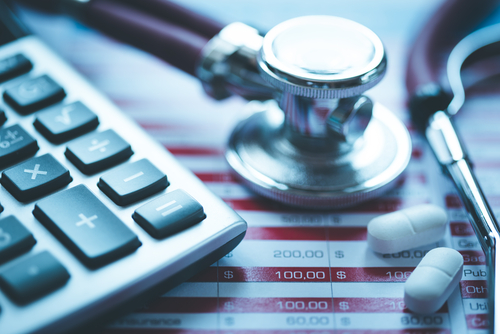Top 20% of Most Costly Sarcoidosis Patients Account for 72% of US Spending on the Disease
Written by |

A study found that the biggest share — 72% — of total healthcare costs among sarcoidosis patients in the U.S. is spent on the top 20% of the most costly patients. And these high-cost patients were found to have more complicated health conditions, the study said.
The study, titled “High-Cost Sarcoidosis Patients in the United States: Patient Characteristics and Patterns of Health Care Resource Utilization,” was published in the Journal of Managed Care & Specialty Pharmacy.
Sarcoidosis is known to be associated with a significant health and economic burden in the U.S. But evidence suggests that there is considerable variation in healthcare spending across sarcoidosis patients.
The drivers for high healthcare costs among sarcoidosis patients are not clear.
So, a research team set out to better understand these patients who represent the top 20% of total healthcare spending to treat sarcoidosis.
A total of 7,173 sarcoidosis patients were included in the study. Those who were first diagnosed between Jan. 1, 1998 and March 31, 2015 were selected from an administrative commercial insurance claims database. The cost of their healthcare plans for the following 12 months was calculated.
Results showed that the top 20% of patients classified as high-cost patients accounted for approximately 72% of the total healthcare costs in the 12-month follow-up period. The average annual healthcare costs of these patients were 10 times that of the low-cost patients ($73,345 vs. $7,073, respectively).
The average annual cost was even higher for patients in the top 2-5%, at $119,878. For the top 1%, the average annual cost was $375,436.
Patients with higher healthcare costs were found to be associated with certain factors including the presence of other diseases besides sarcoidosis, such as deficiency anemia, depression, or cardiac arrhythmia, as well as hospitalizations and the use of biologic drugs like Humira (adalimumab) and Remicade (infliximab).
High-cost patients used healthcare resources more frequently, especially for hospitalizations and visits to specialists, including nephrologists and cardiologists (kidney and heart specialists), indicating more serious health conditions.
“This study described characteristics of high-cost sarcoidosis patients and identified several indicators of high costs using contemporary administrative data. The health care cost distribution is highly skewed for sarcoidosis, making it a worthwhile endeavor to focus improvement efforts on patients in the most costly quintile,” the study’s authors concluded.
The researchers said that efforts to improve quality of care and reduce overall costs are needed and that these should specifically target the more costly patient group.





